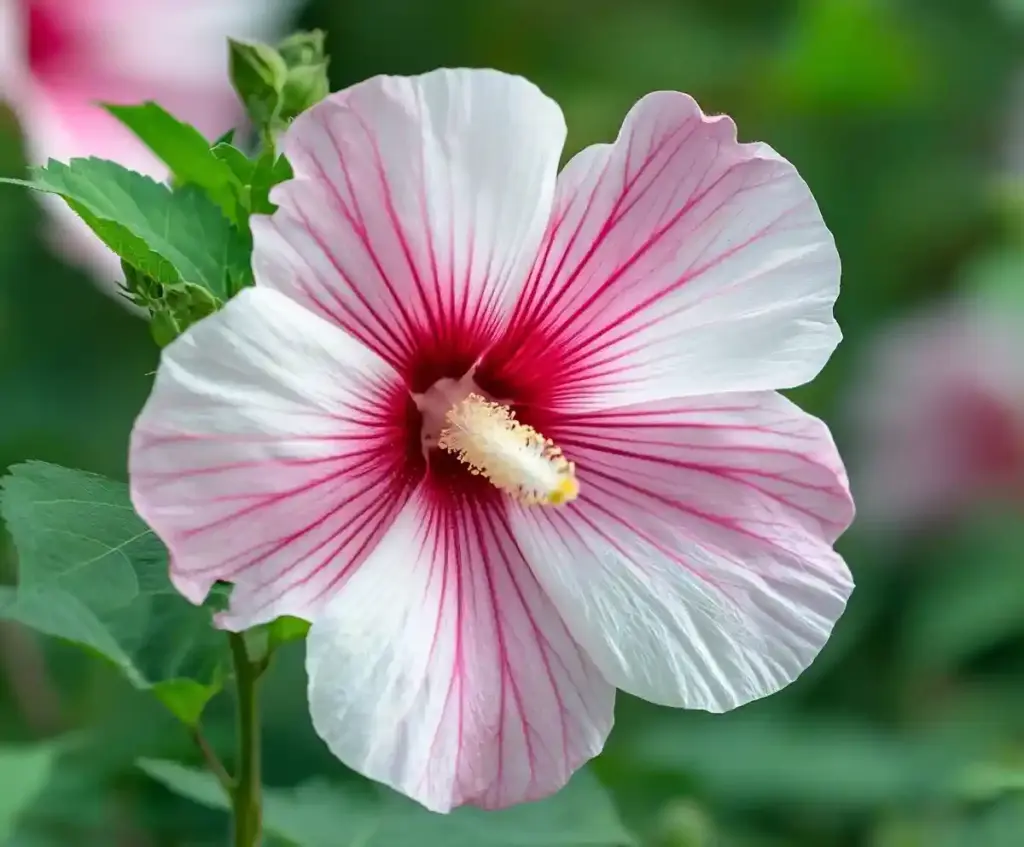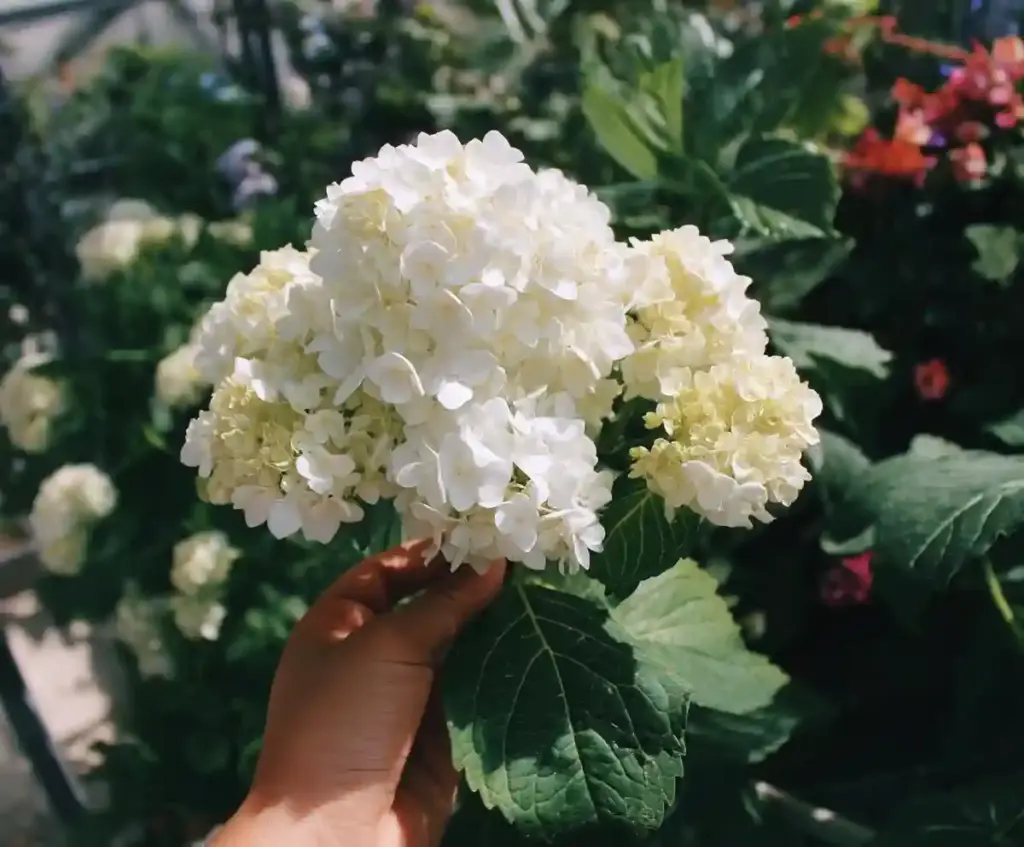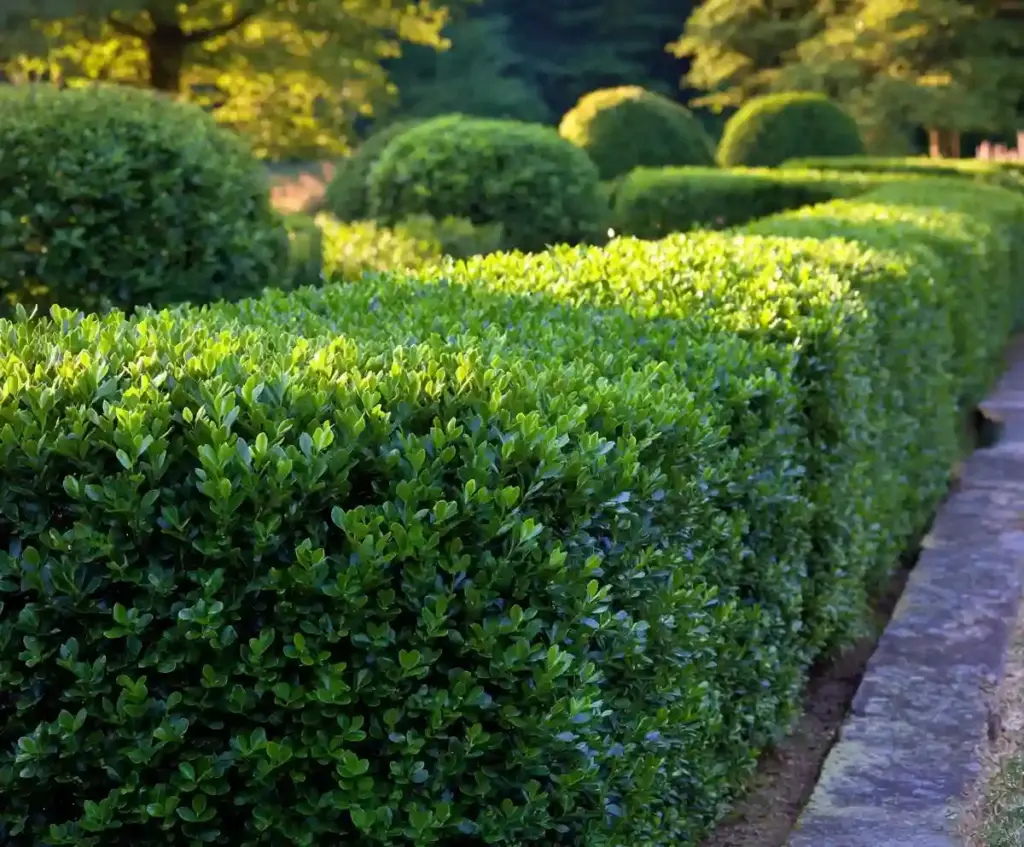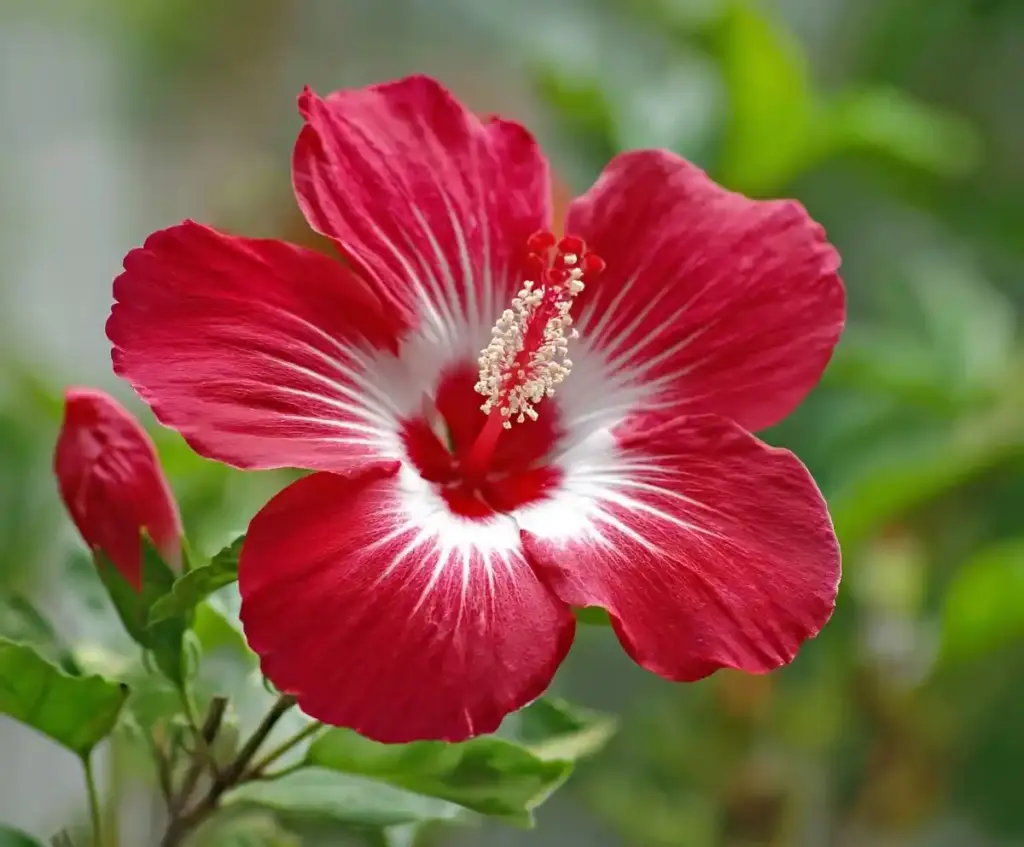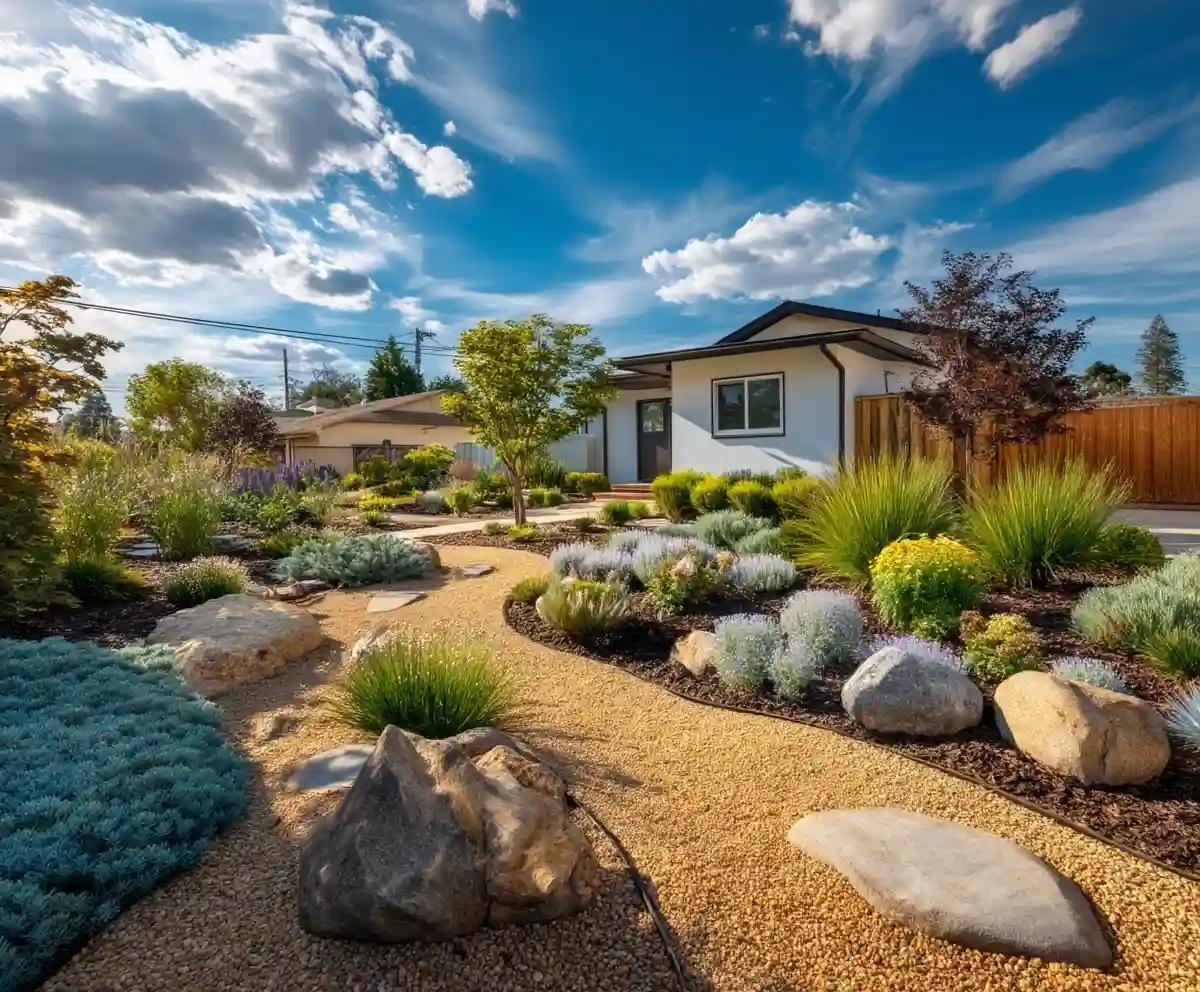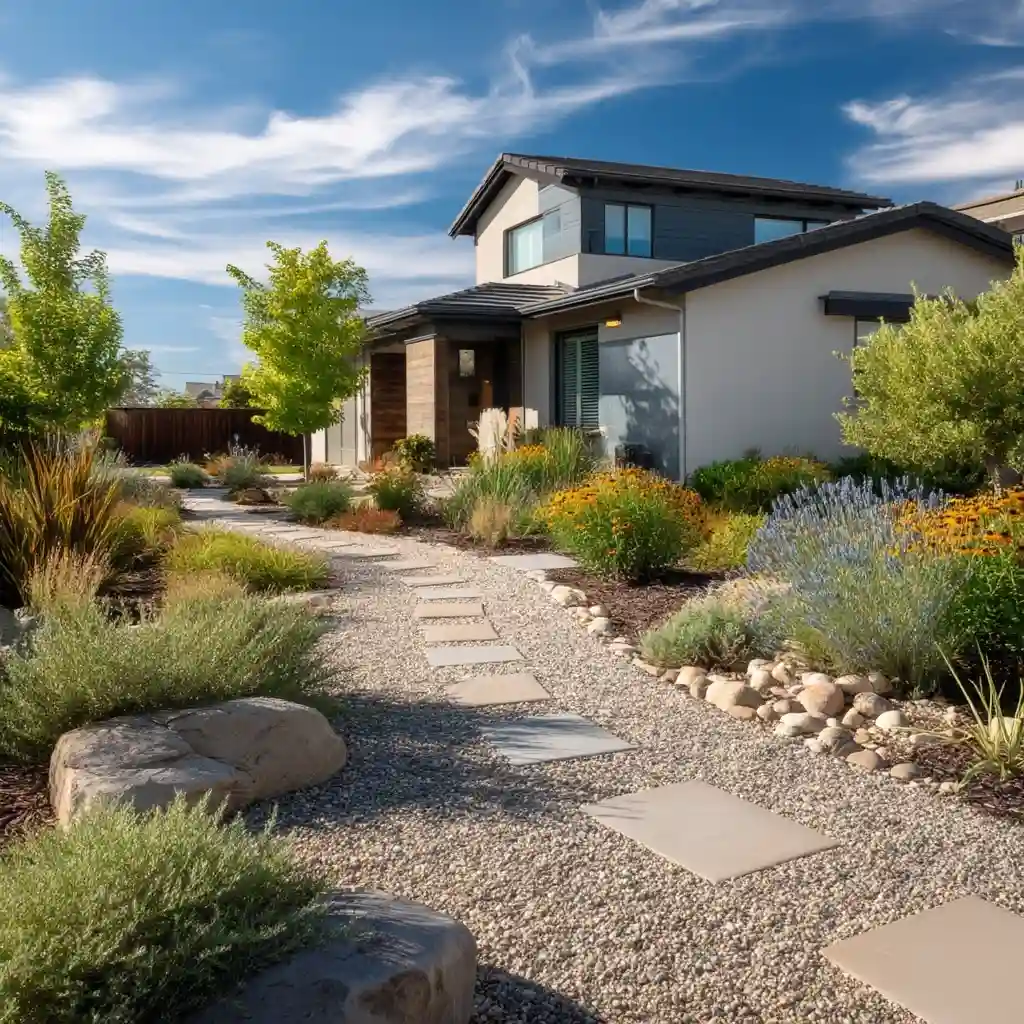Xeriscaping is a landscaping approach designed to create beautiful, functional outdoor spaces while using minimal water. Originating in the 1980s through Denver Water’s water‑conservation initiative, xeriscaping has become a go‑to method for homeowners who want to reduce their environmental footprint and water bills.
Unlike traditional lawns that demand frequent irrigation, xeriscaped gardens rely on smart design, drought‑tolerant plants, and efficient water management. This approach is especially valuable in dry regions or during periods of water restrictions, but it can also work in more temperate climates with the right planning.
By adopting xeriscaping principles, you can enjoy a sustainable landscape that saves time, conserves resources, and supports local wildlife—without sacrificing curb appeal.
Table of Contents
The Seven Principles of Xeriscaping
Successful xeriscaping is built around seven key principles that work together to conserve water and create a thriving, low‑maintenance landscape. By following these steps, you can transform your yard into a water‑wise garden that remains healthy year‑round.
1. Landscape Plan & Design
A thoughtful plan is the foundation of xeriscaping. Start by assessing sun exposure, soil type, and natural drainage on your property. Divide your yard into zones based on water needs—placing high‑water plants closer to the home and low‑water plants in outer areas. Consider hardscapes like stone paths or patios to reduce turf while adding structure and usability to the space.
2. Soil Improvement
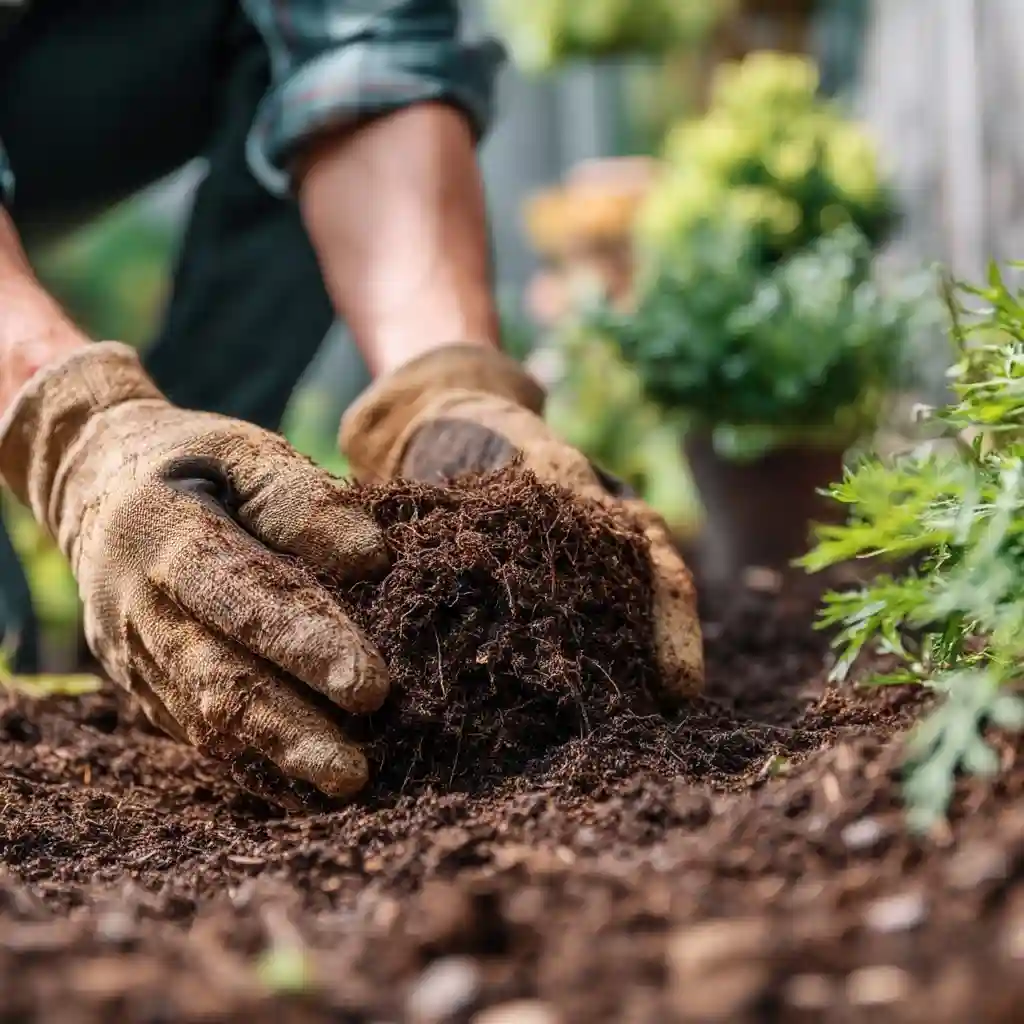
Healthy soil helps plants thrive with less water. For most xeriscapes, incorporating compost or organic matter into sandy or clay soil improves water retention and nutrient availability. In some desert regions, minimal amendment may be better to prevent overly rich soil that encourages water‑hungry growth.
3. Limiting Lawn Areas
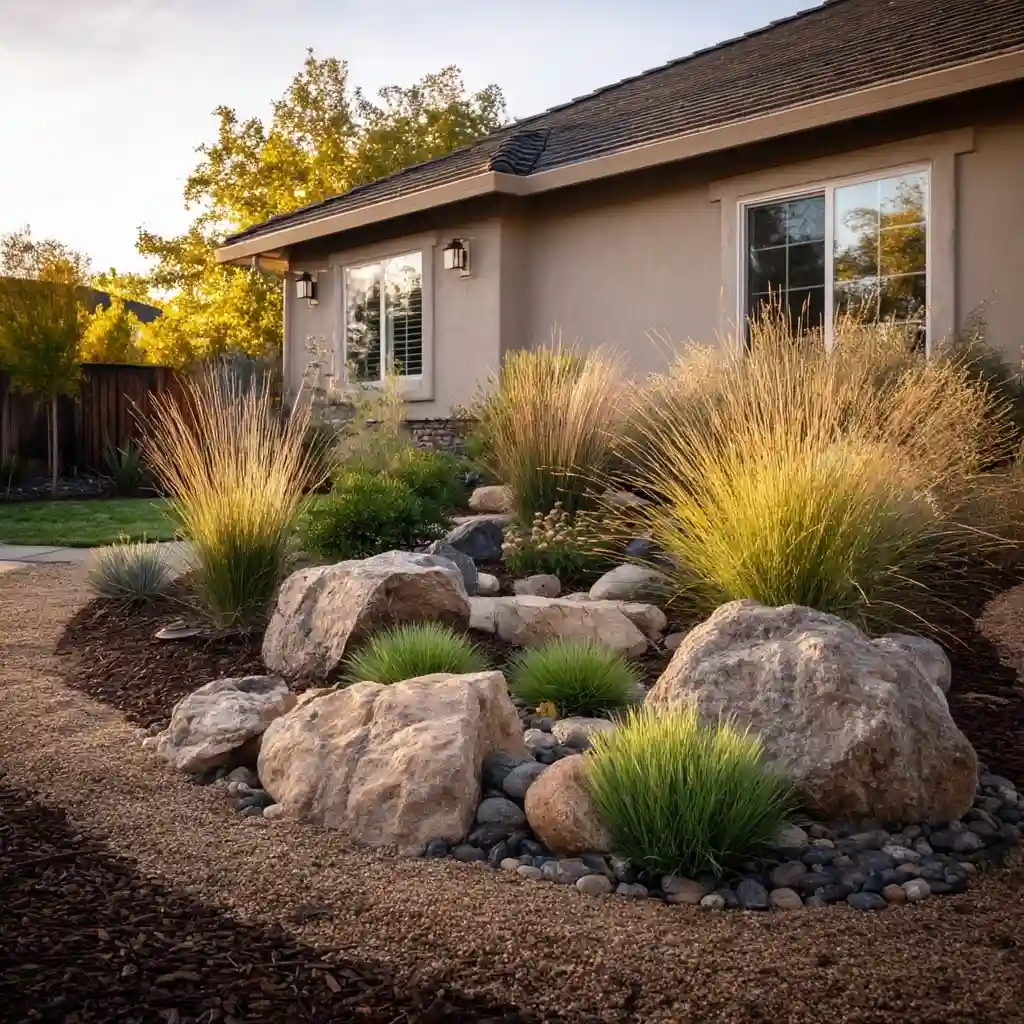
Traditional lawns are water‑intensive and require frequent maintenance. Xeriscaping minimizes turf by using native groundcovers, ornamental gravel, or artificial grass. If a lawn is desired, choose drought‑tolerant grasses and keep it to small, functional areas only.
4. Water‑Efficient Plant Selection
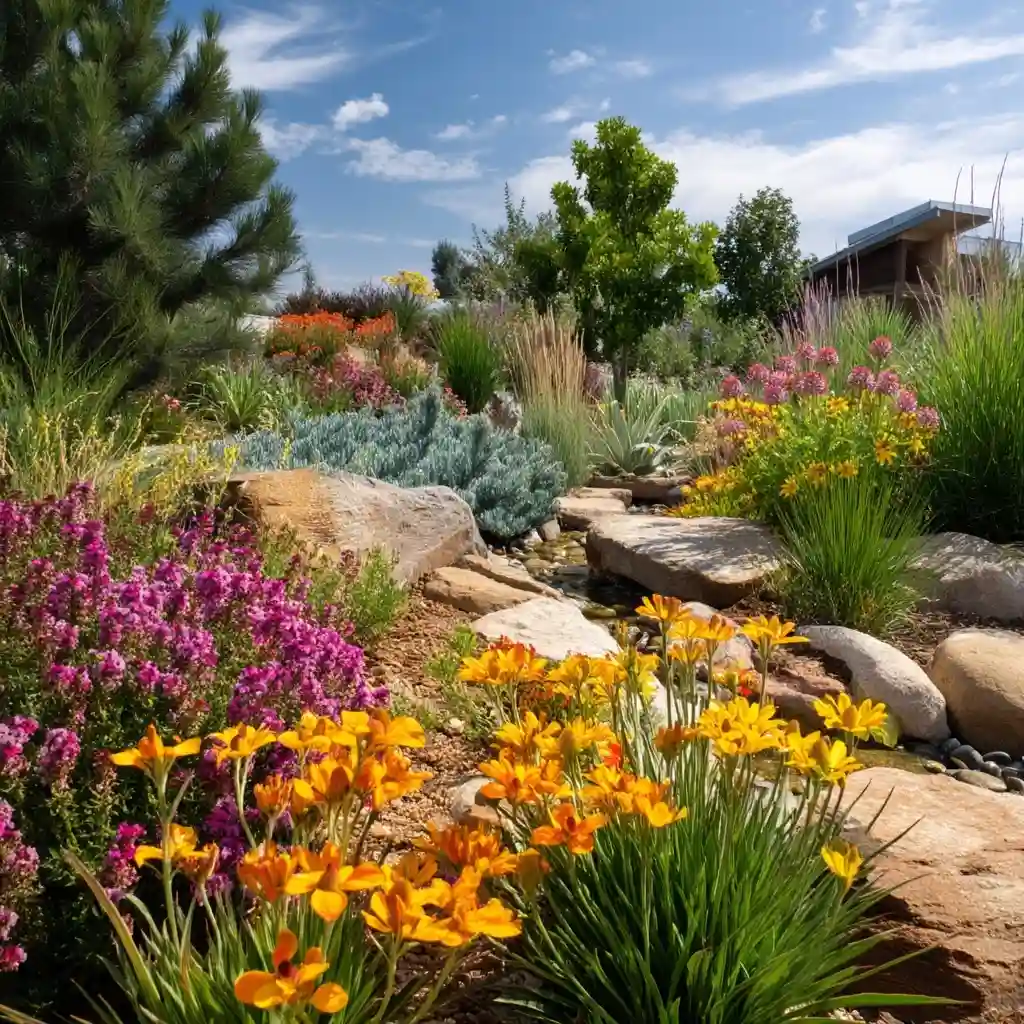
Choose plants that naturally thrive in your climate with little irrigation. Native species and drought‑tolerant shrubs, succulents, and perennials are ideal. Grouping plants with similar water needs together, a concept known as hydro‑zoning, ensures that each area receives the right amount of water without waste.
5. Efficient Irrigation
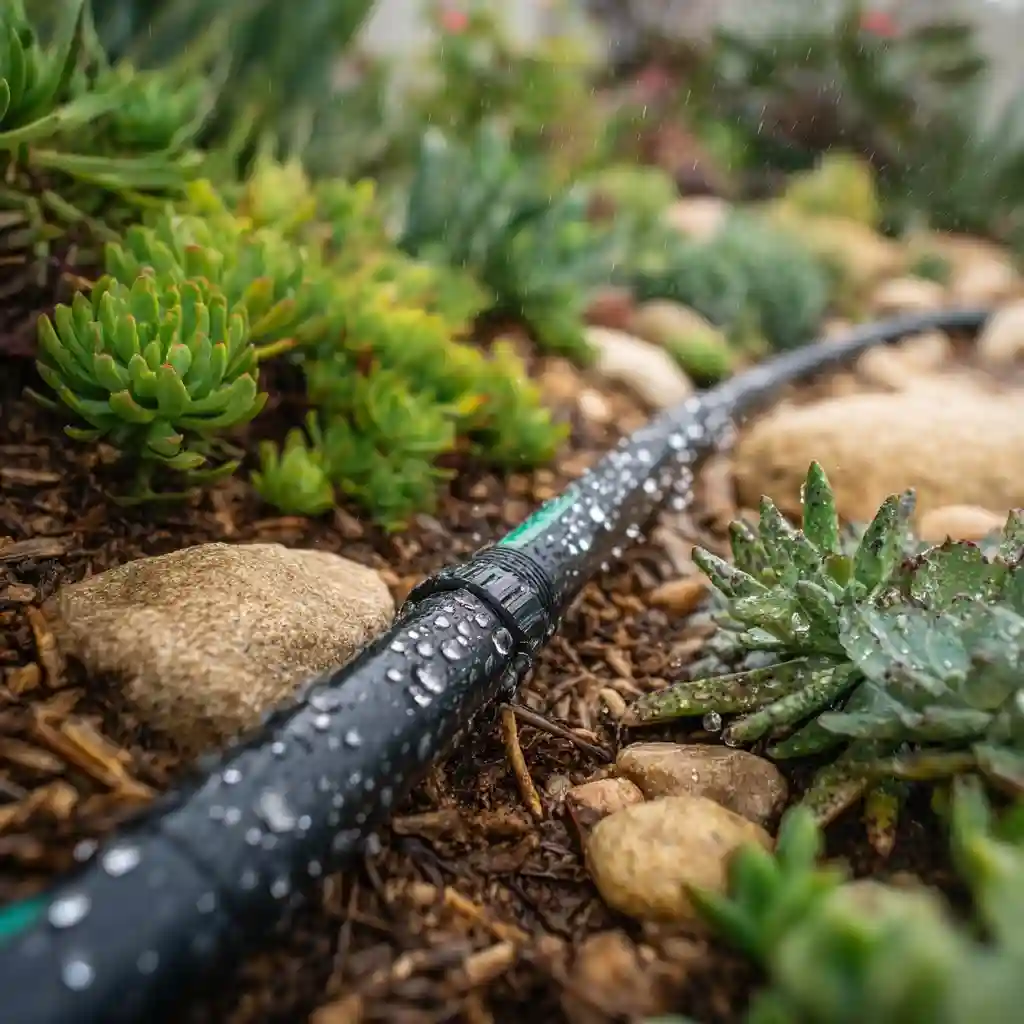
Efficient watering systems are essential to xeriscaping. Drip irrigation delivers water directly to plant roots, reducing evaporation and runoff. Water early in the morning or late in the evening to minimize loss, and adjust watering schedules seasonally to match your plants’ needs.
6. Mulching
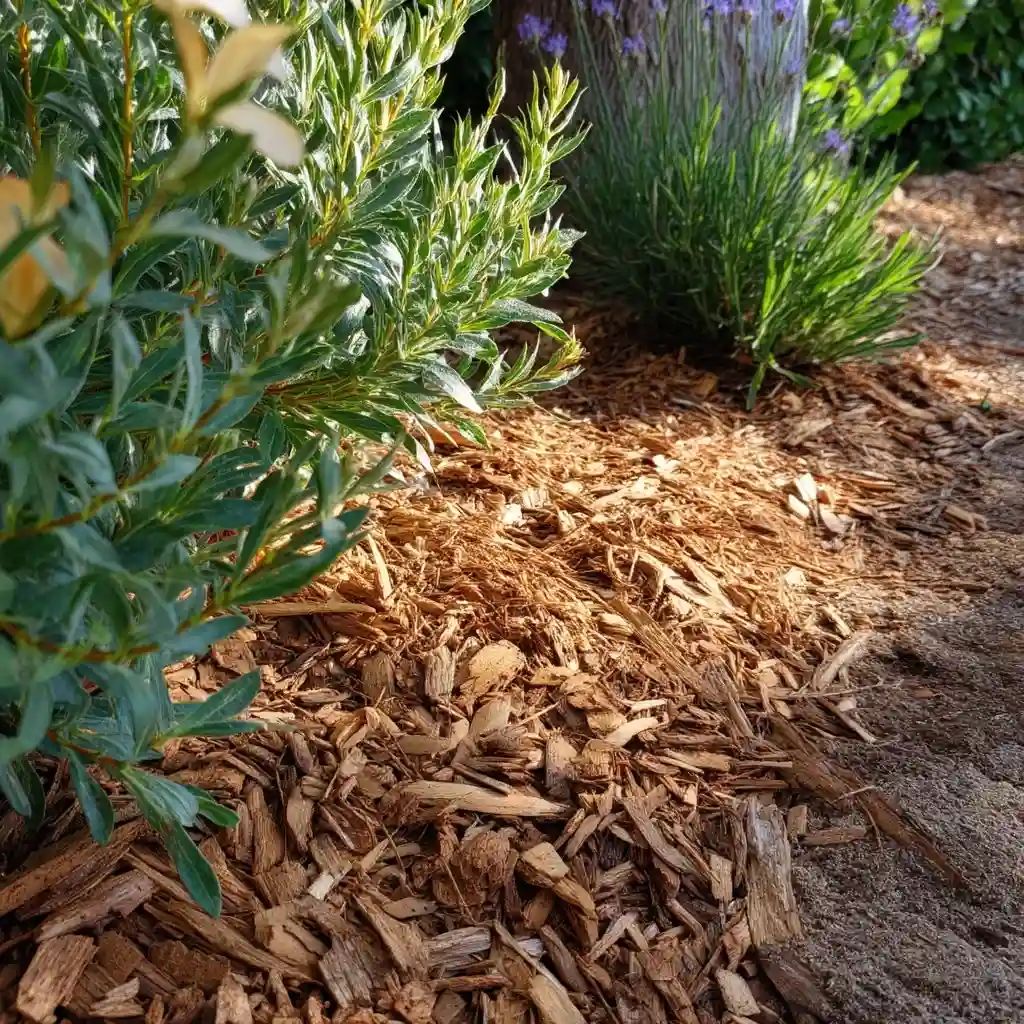
A layer of mulch slows evaporation, suppresses weeds, and stabilizes soil temperature. Organic mulches like bark, wood chips, or shredded leaves break down over time, improving soil health. Inorganic options, such as gravel or river rock, provide a long‑lasting, low‑maintenance alternative.
7. Proper Maintenance
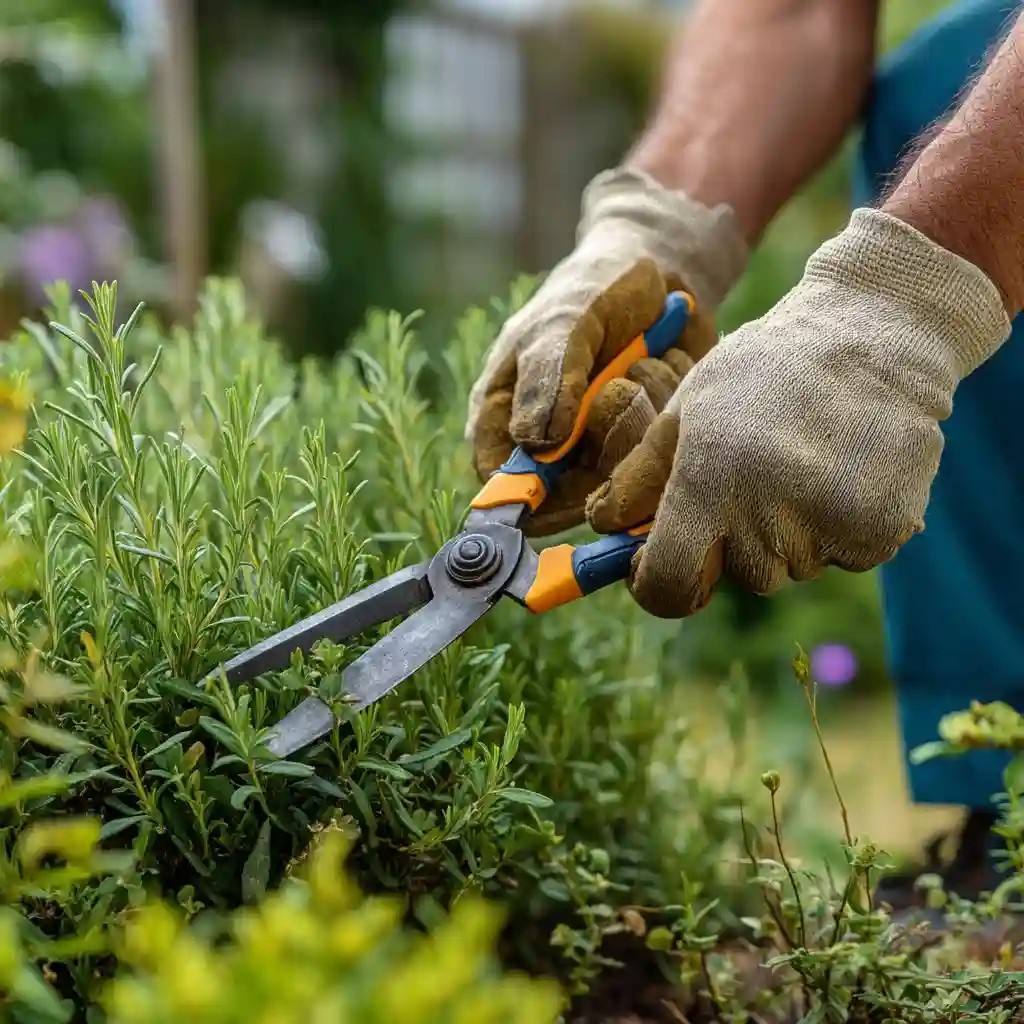
While xeriscaped yards are low‑maintenance, they’re not no‑maintenance. Occasional weeding, pruning, and checking irrigation systems keep the landscape healthy. Fertilize sparingly and replace mulch as needed to maintain moisture efficiency.
Plant Selection for Xeriscaping
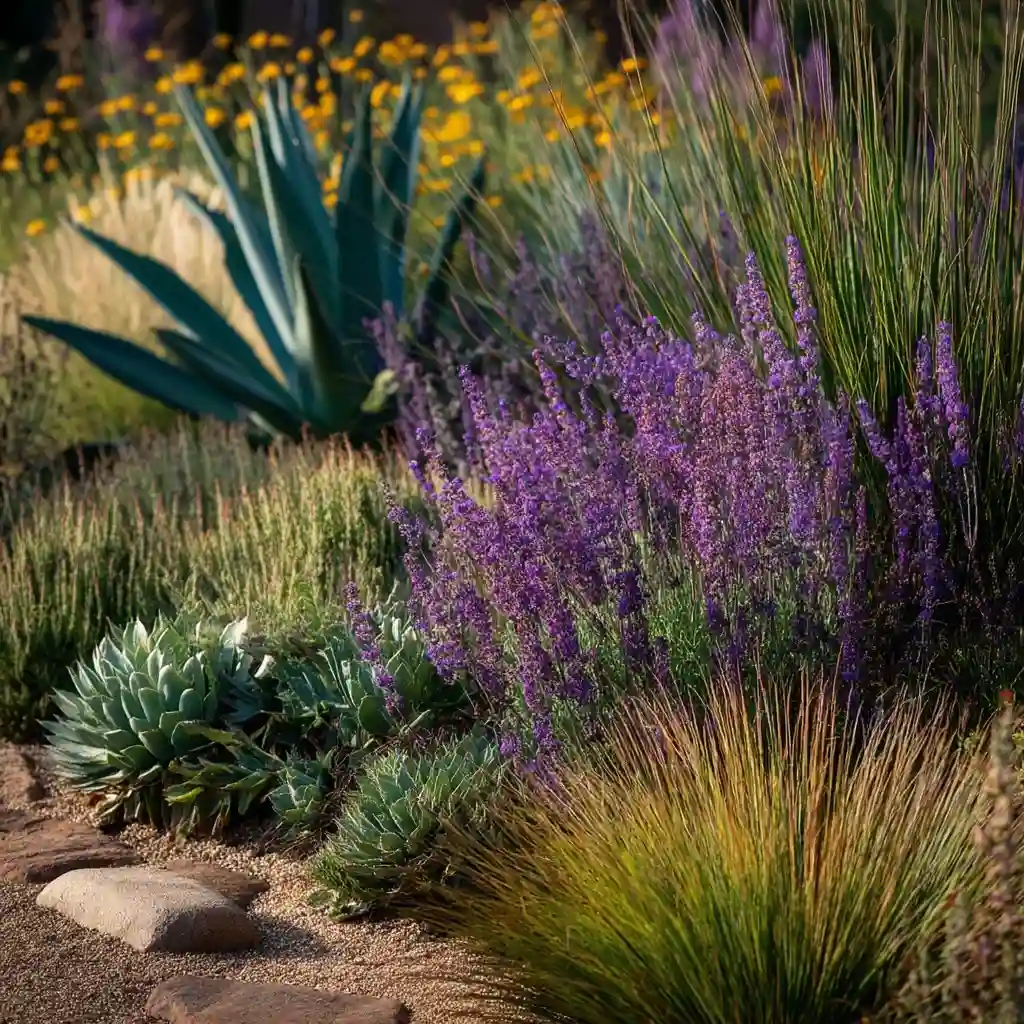
Choosing the right plants is one of the most important steps in creating a successful xeriscape. The goal is to design a landscape that thrives on minimal water while remaining visually appealing throughout the year.
Native and Drought‑Tolerant Plants
Opt for plants that naturally grow in your local climate. Native species are already adapted to local rainfall patterns, soil conditions, and seasonal changes, making them resilient with little supplemental water. Drought‑tolerant plants, including many succulents, ornamental grasses, and hardy perennials, can add color and texture without high irrigation needs.
Examples include:
- Succulents – Agave, Aloe, and Sedum varieties
- Ornamental Grasses – Blue Fescue, Fountain Grass, and Mexican Feather Grass
- Flowering Perennials – Lavender, Salvia, and Black‑Eyed Susan
- Native Shrubs – California Lilac, Sagebrush, and Manzanita
Hydro‑Zoning for Efficiency
When designing your xeriscape, group plants with similar water needs together. This approach, known as hydro‑zoning, allows for targeted irrigation and prevents overwatering certain areas while under‑watering others. Place your lowest water‑use plants in the outer areas of the garden and higher‑water plants near walkways, patios, or entryways for easier care.
Year‑Round Visual Appeal
A well‑designed xeriscape doesn’t have to look barren. Combine evergreens, flowering plants, and seasonal grasses to create visual interest in every season. Consider plants that also attract pollinators, like bees and butterflies, to support local biodiversity.
Irrigation and Water Management
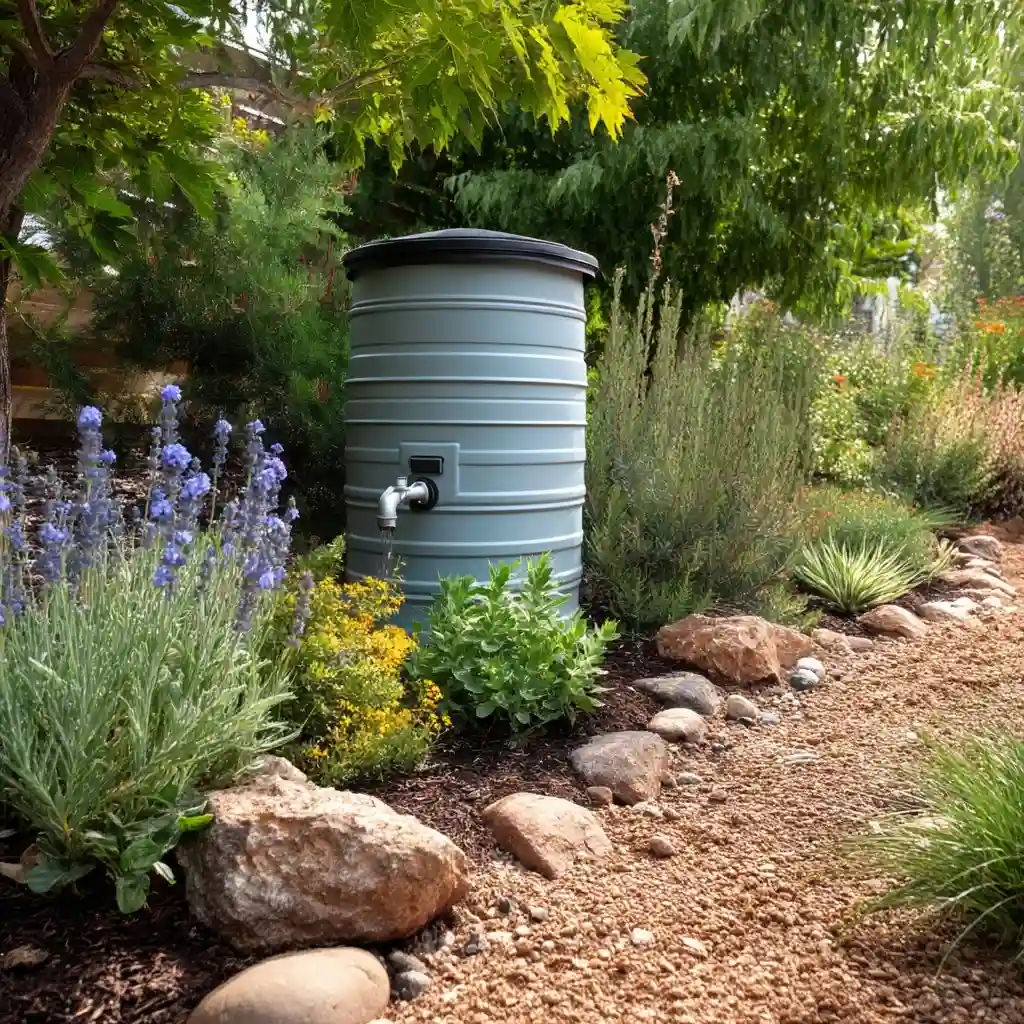
Even though xeriscaping focuses on reducing water use, strategic irrigation is still essential for maintaining a healthy landscape. The goal is to deliver water efficiently and only where it’s needed, reducing waste and promoting strong root growth.
Drip Irrigation for Precision
Drip irrigation is the most efficient watering method for xeriscaping. It delivers water directly to the root zone, minimizing evaporation and runoff. By using emitters or soaker hoses, plants receive slow, deep watering that encourages roots to grow downward, making them more drought‑resistant over time.
Optimal Watering Schedule
Timing is everything in water‑wise landscaping. Watering early in the morning or late in the evening reduces evaporation loss. Deep but infrequent watering helps plants establish stronger root systems and improves overall drought tolerance. In most xeriscapes, newly planted areas may require more frequent watering for the first season, but established plants need very little supplemental water.
Water Management Tools
Modern irrigation technology can make water management even more efficient:
- Moisture Sensors: Monitor soil moisture to prevent overwatering.
- Smart Controllers: Adjust irrigation schedules automatically based on weather conditions.
- Rainwater Harvesting: Collecting rainwater in barrels or cisterns provides an eco‑friendly irrigation source, especially useful in dry months.
By combining smart irrigation with careful plant placement, xeriscaping can reduce water use by up to 60–80% compared to traditional lawns, all while keeping your landscape vibrant and healthy.
Soil Preparation and Mulching

Proper soil preparation and mulching are critical components of a successful xeriscaping project. Healthy soil improves water retention, while mulch helps reduce evaporation, suppress weeds, and maintain consistent soil temperatures.
Soil Preparation
Before planting, assess the condition of your soil. Most xeriscaping projects benefit from soil that drains well but can still hold enough moisture for plant roots.
- Amend Poor Soil: If your soil is sandy, add compost or organic matter to improve its ability to retain moisture.
- Enhance Clay Soil: For heavy clay soils, mixing in coarse sand or compost improves drainage and prevents root rot.
- Minimal Disturbance for Natives: Some native plants thrive in existing soil with little modification, as too many nutrients may encourage weak, water‑dependent growth.
Properly prepared soil ensures that your plants develop strong root systems, making them more resilient during dry periods.
Mulching for Moisture and Protection
Mulch is a xeriscaper’s best friend, offering multiple benefits with minimal effort:
- Moisture Retention: Mulch reduces evaporation, allowing the soil to hold water longer.
- Weed Suppression: A thick layer of mulch discourages weed growth, which competes with plants for water.
- Temperature Regulation: Mulch keeps soil cooler in the summer and warmer in the winter.
You can choose between:
- Organic Mulch: Wood chips, shredded bark, pine needles, or leaves—adds nutrients as it decomposes.
- Inorganic Mulch: Gravel, river rock, or crushed stone—long‑lasting and ideal for arid climates with minimal maintenance.
Refreshing mulch annually keeps your xeriscape looking neat while maximizing water efficiency.
Maintenance & Benefits
Xeriscaping is designed to be low‑maintenance, but regular care ensures your landscape remains healthy, vibrant, and efficient. Proper upkeep not only enhances your garden’s appearance but also maximizes the long‑term benefits of water‑wise landscaping.
Simple Maintenance Tips
- Weeding: Remove weeds regularly to prevent them from competing with your plants for water and nutrients.
- Pruning: Trim shrubs and perennials as needed to maintain shape, encourage growth, and improve airflow.
- Mulch Renewal: Check mulch depth and replenish it yearly to maintain moisture retention and weed suppression.
- Irrigation Check: Inspect drip lines and emitters periodically to ensure water is reaching plant roots efficiently.
Key Benefits of Xeriscaping
- Significant Water Savings: A well‑planned xeriscape can cut outdoor water use by up to 80% compared to a traditional lawn.
- Lower Maintenance Costs: With fewer lawn areas to mow and less frequent watering, both time and labor are reduced.
- Environmental Impact: Conserves water, supports local wildlife, and reduces the need for chemical fertilizers and pesticides.
- Year‑Round Beauty: With the right plant selection, xeriscaping provides seasonal color, texture, and structure without heavy upkeep.
A properly maintained xeriscape becomes more self‑sufficient over time, rewarding you with a sustainable and attractive outdoor space that’s both eco‑friendly and cost‑effective.
Conclusion
Xeriscaping offers a practical, sustainable way to create a beautiful yard while conserving water and reducing long‑term maintenance. By following the seven principles—planning your design, improving soil, selecting the right plants, using efficient irrigation, mulching, and maintaining your garden—you can enjoy a thriving outdoor space that benefits both your home and the environment.
Whether you live in a dry climate or simply want to lower your water bills, xeriscaping provides an eco‑friendly solution that delivers beauty, functionality, and long‑term savings.
FAQs
1. Why is xeriscaping important?
Xeriscaping conserves water, reduces maintenance, and creates landscapes that are both eco‑friendly and cost‑effective.
2. Can xeriscaping work outside of arid climates?
Yes. By selecting appropriate drought‑tolerant plants for your region, xeriscaping can succeed in almost any climate.
3. Does xeriscaping save money?
Absolutely. Reduced irrigation and maintenance costs can significantly lower your utility bills over time.
4. How do I start xeriscaping my yard?
Begin by planning your layout, assessing soil and sun exposure, and gradually replacing high‑water lawns with drought‑tolerant plants.
🌿 Love gardening inspiration? Follow me on Pinterest for bold plant ideas, tips, and seasonal color!
More Posts
